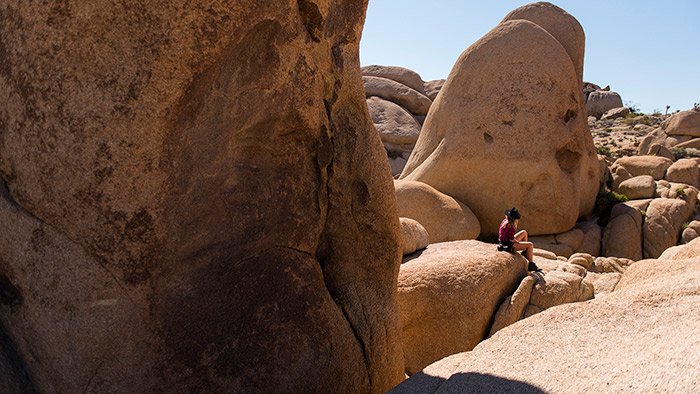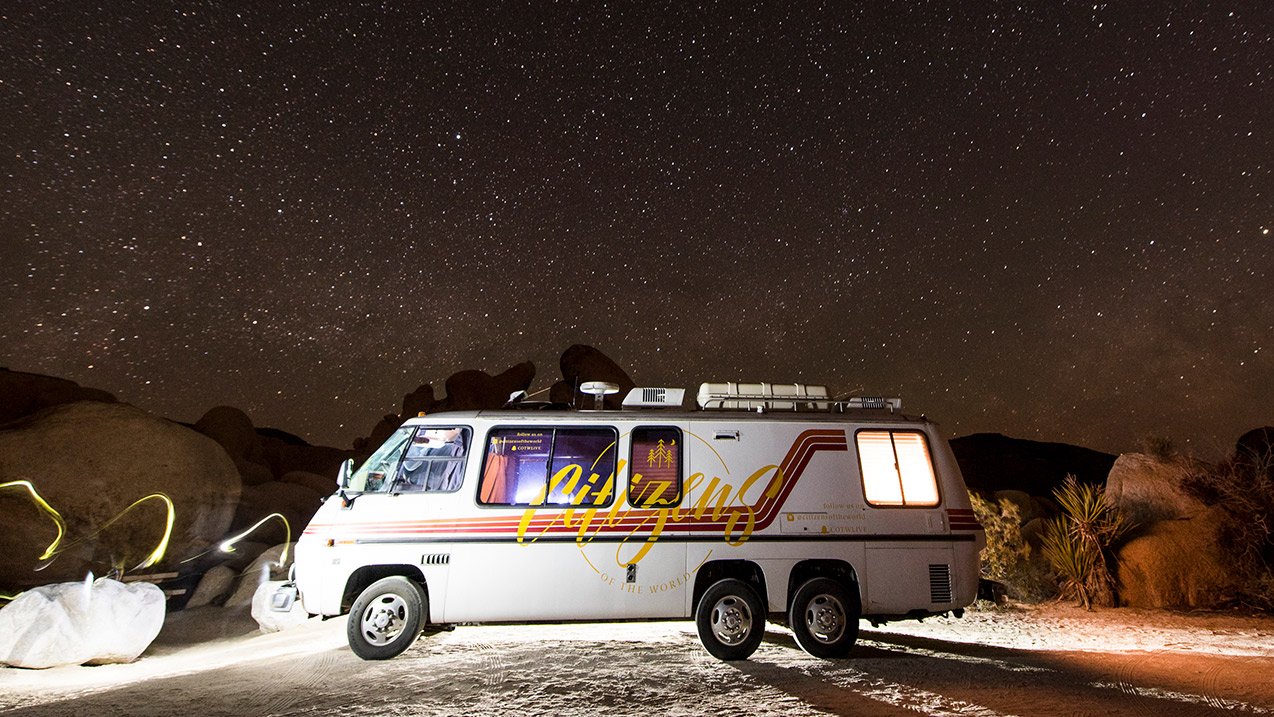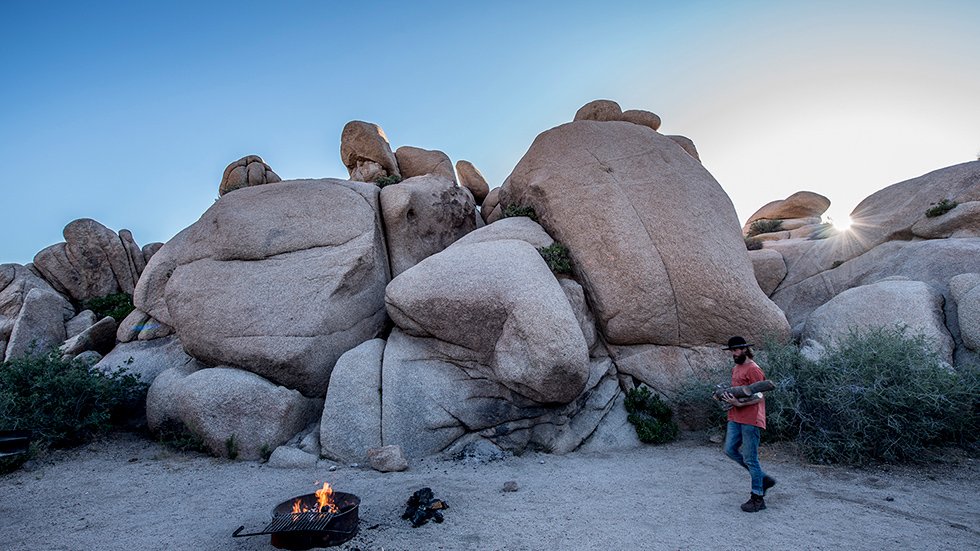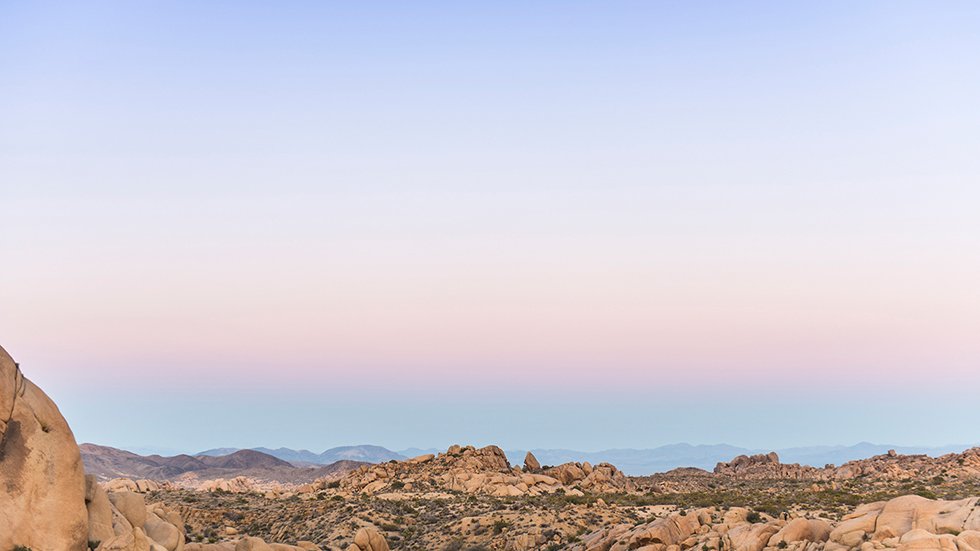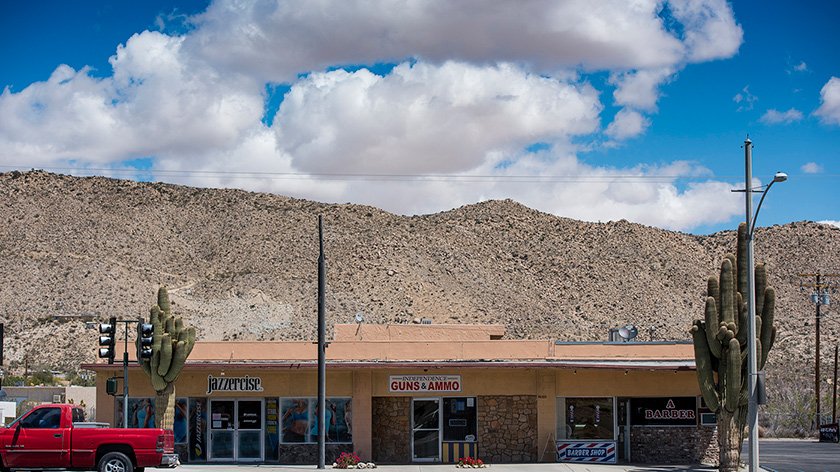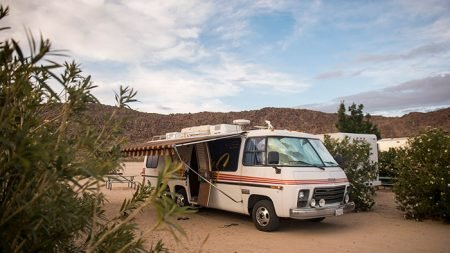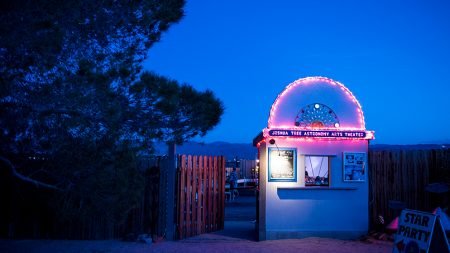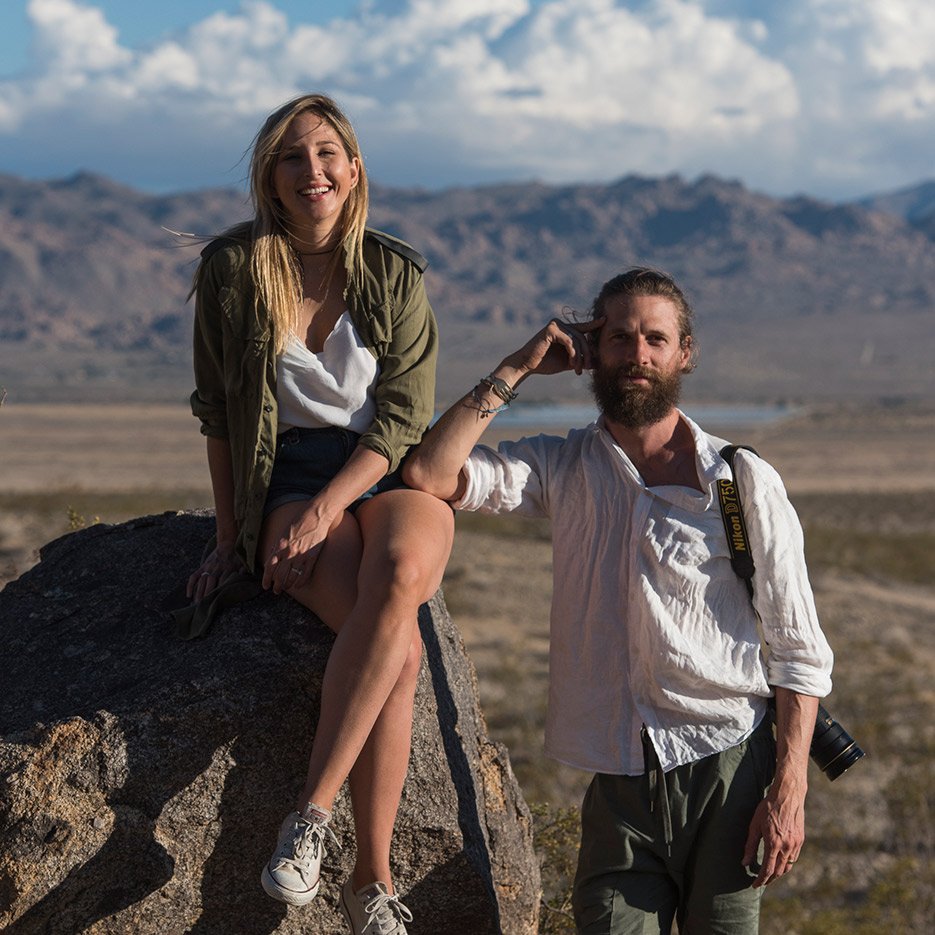The mystical boulders of the Mojave Desert have long lured free-spirited city slickers from LA, but if it’s your first trip in Joshua Tree, it helps to plan a little ahead.
So here’s your never-fail guide to camping Joshua Tree right (because we made all the mistakes for you).
Approximately three hours from Los Angeles but seemingly a universe away from reality, Joshua Tree has long been the the high-desert town with the lo-fi antidote to the frenetic, hyper-commercial muscle that powers the city.
It’s a place that fuses adventure with soul-stirring scenery. Where you can stand on a ridge at Keys View and tempt fate, staring right into the clashing plates of the San Andreas fault. Or play guitar by the fire hugged by ancient granite formations while coyotes sing backup in the distance as they howl at the stars.
But like any date with a desert you’ve got to have your wits about you.
Treat her with respect and she’ll reward you with sights, sounds and sunsets that’ll render you speechless. Take her for granted and you’ll find yourself by the side of Interstate 10 with no fuel, very little phone reception, squinting into the horizon wondering where it all went wrong.
Rule 1: Camping can be competitive
Once you enter its dusty borders, Joshua Tree National Park is a place that actively encourages fending for yourself.
Want to climb the Flintstone-like clusters of prehistoric boulders? Go and knock yourself out. Feel like a night hike with only a headlamp and a sense of bravado? Go for it (but you should probably bring water and a compass).
This egalitarian approach also extends to the campsites – it’s first come, first served all the way, with a 14 day maximum stay limit. The result is a park that’s shrewdly protected from long-termers taking up all the room, but it means you’re going to have to get laser focused on where you’re planning to sleep and when you’re going to get there.
A common rookie error is to decide to head to Joshua Tree on a whim, do a rough Google search of the main campgrounds on the drive up, pick one that looks pretty, ring the ranger station and ask ‘is there any room?’
You’ll most likely be told the park is full and to not bother. Which may be the case, but more often than not the answer is they don’t really know how full the park is until nightfall when they drive around and collect the fees (more on that later).
At this point the journey becomes a fun little mystery game called ‘Where will I sleep tonight?’, where the winner finds themselves overlooking a private martian-like quarry of stones after lucking into a spot at Jumbo Rocks campsite. And losing?
Well, that could mean parking your RV beneath the cold glow of a street lamp in a Walmart carpark because you didn’t realise it’s Memorial Day tomorrow and the park is busier than Jurassic World with a blackout.
So that’s why….
Weekends are your enemy
Simon and Garfunkel weren’t kidding; the sound of silence is seriously something to sing about.
But if you’re dreaming of a Thursday to Sunday vision-quest under the moonlight then we hate to be the bearers of bad news – weekends in Joshua Tree are full of families. Along with all the humming RV generators that go with them. And especially in summer.
If you truly want to revel in the Mojave’s frontier-esque fun then head in mid-week. Not only will it afford you practically first pick of campsites, there’s also a tranquility that feels positively supernatural, especially once the sun lowers at 7pm. Feel free to get nude.
Cash rules
You don’t need a lot of money to enjoy Joshua Tree’s mystical beauty, usually only about $US15 ($20AUD) per night.
You do, however, need to have it on hand in old school greenbacks and shrapnel. Park rangers don’t do IOUs, use EFTPOS machines, or take any excuses, so not doing so will most likely mean a buzz-kill of a nighttime drive back to town for the ATM.
At the entrance of each campsite you’ll spy a noticeboard where they keep the mini-envelopes. Insert the cash for your stay, write your name and chosen campsite on the front and place the package in the lock box provided.
Like we said, it’s ‘old school’ but there’s something charming about the low-tech process.
Don’t forget firewood… and water… and gas… but definitely firewood
Each campsite in Joshua Tree comes armed with a fire pit, a picnic table…and that’s about it. Prepare to feel positively like Bear Grylls because you’re going to get a good handle on ‘dry camping’.
This means there are no RV hook ups for water, no flush toilets (with the exceptions of Black Rock and Cottonwood campsites) and definitely no electricity. Park rules also only permit generators between 7-9am, 12-2pm and 5-7pm.
The overall gist is you’re going to have a heck of a lot of down time at your disposal.
Here’s why we emphasise the firewood so much. Half the magic of Joshua Tree is sitting by the flames watching the light reflect onto the rocks and telling old war tales from battling the paperwork at your cubicle (actually forget that, no work talk allowed).
There’s nowhere to buy wood once you enter the park so stock up in town and buy enough for a few nights.
Have a Plan B
So what if date restrictions mean you’ve found yourself stuck in the desert, knee-deep in screaming families on some major US public holiday? Never fear.
Even though you might not find a spot within the park proper, there’s an abundance of privately run RV parks, such as Joshua Tree Lake RV & Campground, which has everything (including a kitchen sink, if required) as well as being near by one of the most unique experiences you can have while in town; The Joshua Tree Astronomy Arts Theatre.
This way you get to capitalise on the majesty of the Californian desert while still revelling in the wonder of electricity and a hot shower.
You can think of it as Joshua Tree Lite.
This feature originally appeared on AWOL.



